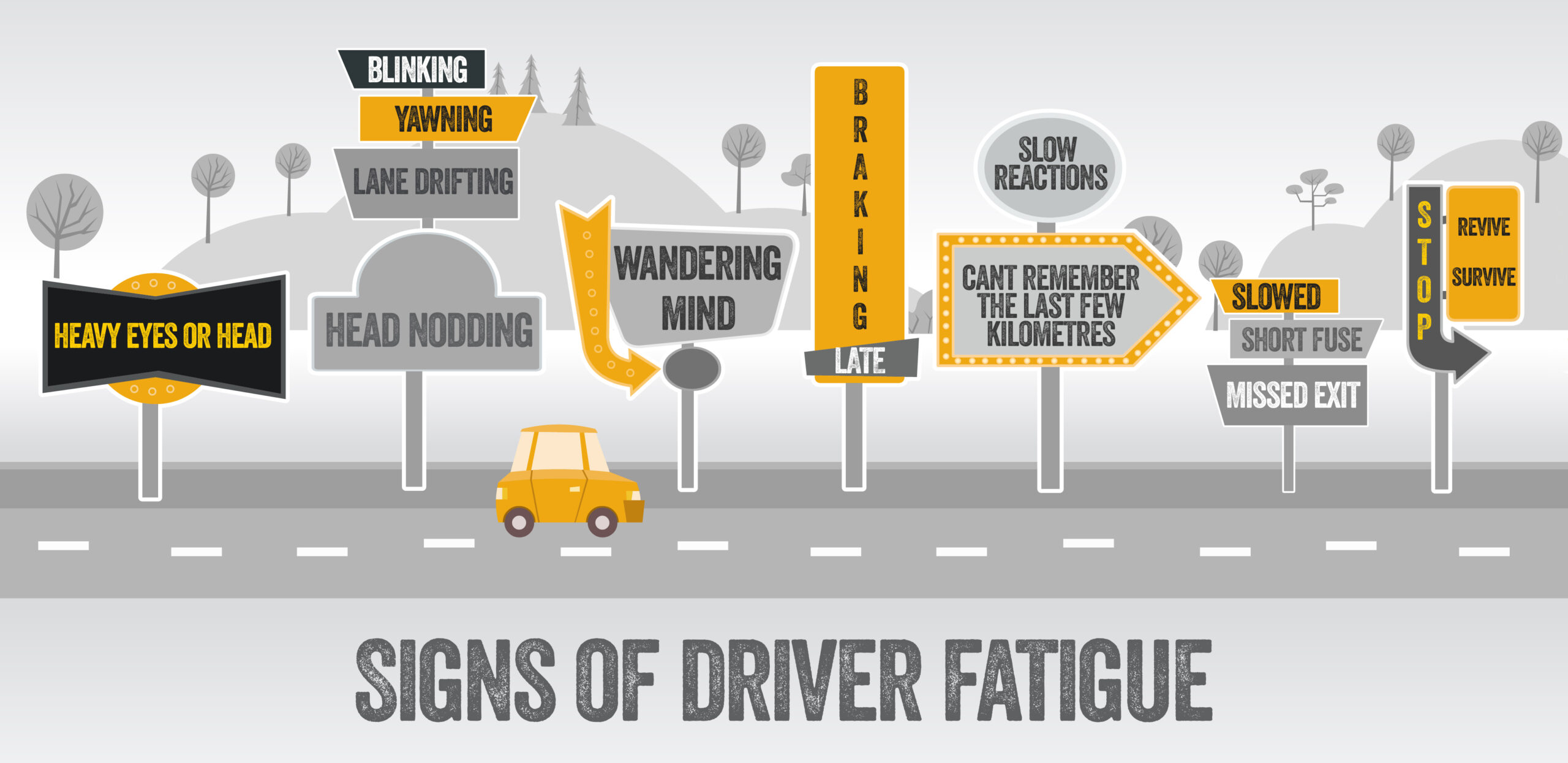Fatigue is one of the major causes of road crashes making driving while sleepy as dangerous as speeding, or driving under the influence of alcohol. People often think that driver fatigue means falling asleep at the wheel but that’s not all it is – feeling tired, weary or exhausted is enough to seriously impair your driving long before you reach the extreme form of fatigue and ‘nod off’ at the wheel.
What’s the big deal?
When you’re tired, your brain cells don’t communicate effectively. This causess problems with visual perception, physical reflexes and memory. Relating those things to driving, fatigue can cause a number of problems including:
-
- reducing your attentiveness and makes you less alert to dangers
-
- slowing your reaction time, reflexes and ability to make decisions
-
- drifting out of your lane and following too closely behind other drivers
-
- speeding up and slowing down without really noticing
-
- decreasing your tolerance for other road users.
Being tired can also cause you to drift in and out of sleep without knowing it. Sleep experts call this microsleep. If this happens while driving, it can cost you your life. These naps can last between three and five seconds and are the main cause of fatigue-related crashes where the driver runs off the road. Crashes that occur because the driver has fallen asleep are often very severe because the driver is unable to do anything to avoid or prevent the crash.
Here are some signs to look for:

